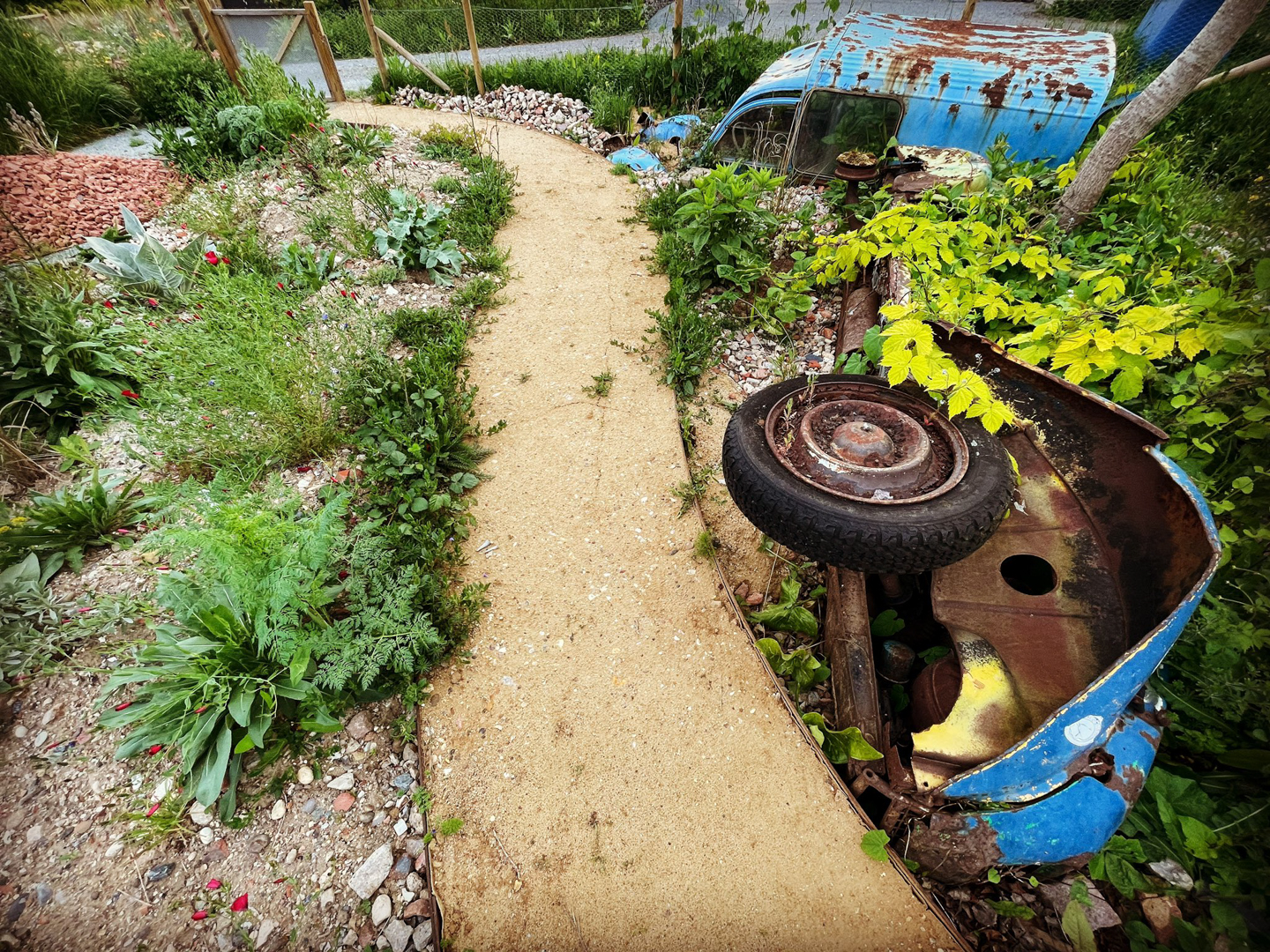Where others see trash in an industrial wasteland, John Little sees the raw materials to create startlingly effective ecological habitat.
For 25 years now, this English innovator has worked to recycle, reclaim and repurpose the stuff we throw away into artful ecological structures.
He takes a mix of crushed highway rubble, rusted out old cars, smashed bathroom tiles together with handfuls of wildflower seeds, and rejigs all the broken pieces to fit just about any niche in the urban jungle. Everything from green roofs and habitat walls to bus shelters and buzzy meadow landscapes.
John Little was our special guest speaker on The New Perennialist Talks on February 21st in what turned out to be a wildly inspiring two-hour session where we all learned how to break some rules.
The recording is now available in my Talks archive to watch on Vimeo-on-demand.
Finding peak biodiversity where least expected
This self-taught ecological designer is firmly convinced that structure is the forgotten tool in boosting biodiversity:
We’ve put such a massive emphasis on plants within the worlds of conservation and horticulture, we’ve missed the importance of the physical spaces and niches that wildlife actually depends on.
According to John, we find the right set of conditions in places like brownfield and post-industrial sites, which typically have the chaotic structure and erratic topography that deliver this soup of raw materials. That’s why they’re so important for biodiversity. His thinking is well supported by reams of scientific studies and survey data for brownfield sites.
For John, the course of action is clear, “We need to bring our essential infrastructure to life to realize that wildlife can be very happy in a beautiful well-designed place.”
In an inspired twist of travel karma last fall, I got to see John speak not once but twice on this very topic in Europe. Actually, it was more like a performance. Each time, he brought the house down with an ecological punch delivered with a sly wink – first at the Rewilding the Mind Symposium in England and later at the Maestri del Paesaggio in Bergamo, Italy.

Cooking up habitat at home
John Little invents habitat for wildlife with his Grass Roof Company and lives and works at Hilldrop Garden in Essex, recently named as one of the most iconic new gardens in the world by the London College of Garden Design.
In nominating the site, leading planting designer Nigel Dunnett from Sheffield University notes, “Hilldrop is not simply rewilded and left to happen but actively nurtured and guided. John Little challenges us to look differently at what is beautiful and what is valuable and adapted to a drought tolerant future. Every structure is an opportunity to create habitat with lateral thinking.”

Nigel and John have collaborated in the past on Chelsea Flower Show Gardens, green roof books and sustainability projects. Indeed, Dunnett reveal that John’s work has been a major source of inspiration for him over the past 20 years.
Habitat creation is a primary goal these days for ecological and wildlife inspired landscape designers and gardeners. The truth is we can get stuck on how to do it and limit our options.
The work of crafty innovators like John Little shows there is a lot more to it. Because it’s not just about fixating on plants, it’s about all the steps we can take right now to invent meaningful habitat with out-of-the box thinking to meet the looming deadlines of our climate-challenged world.





Tony,
It’s like in February, you come out of hibernation, present these wonderful plant persons and get the audience’s juices flowing. Thanks for becoming my favorite spring ritual. The arrival of Tony!!
Hmm. Now that you mention it.. I am seeing a pattern;-)
You don’t need a lot of money to create habitat for wildlife. Nice tips for thinking about re-using what you already have.
Exactly. That’s the gist of it in a nutshell.
You’re right. Instead of thinking about my junk as someone else’s treasure; I’ll look at my own junk and see how I can incorporate it as garden/landscaping treasure. I have been using two old folding bedframes as cucumber trellises, so I have the right idea.
Very VERY excited for this…thank you!
Way cool habitat wall – almost as much an art piece as a useful wildlife support.
Are there plans for how to build? What are the necessary steps for an effective habitat?
You could look at John Little’s Green Roof Co. web site for more details, if not actual plans.